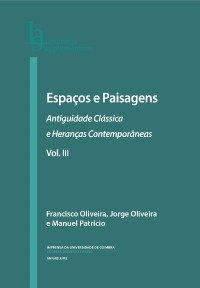Please use this identifier to cite or link to this item:
https://hdl.handle.net/10316.2/31564| DC Field | Value | Language |
|---|---|---|
| dc.contributor.author | Barreira, Catarina | |
| dc.date.accessioned | 2014-06-24T10:51:00Z | |
| dc.date.accessioned | 2020-09-21T02:25:57Z | - |
| dc.date.available | 2014-06-24T10:51:00Z | |
| dc.date.available | 2020-09-21T02:25:57Z | - |
| dc.date.issued | 2012 | - |
| dc.identifier.isbn | 978-989-26-0292-9 (PDF) | |
| dc.identifier.uri | https://hdl.handle.net/10316.2/31564 | - |
| dc.description.abstract | Contributions for the study of classic sources in the production of figurative gargoyles in the Portuguese context of the sixteenth century Our research concerns gargoyles as elements of monumental sculpture, integrated in religious buildings that played an important pedagogical and symbolic role from the 13th century to the 16th century. Characteristic of the Central European Gothic, gargoyles reached their apogee in the national context in the first half of the 16th century, a phenomenon for which two things contributed a great deal: the first is related to the conventual complex of Santa Maria da Vitória, Batalha, where gargoyles can be seen in all the construction, with an iconographic program unknown among us until then. The second is the presence, in Portugal, of a very significant number of artists proceeding from other countries, who were acquainted with its existence in buildings. Therefore, in the first quarter of the 16th century, a significant number of religious buildings have gargoyles, but the phenomenon of their integration and the legitimating of their iconographic programs will have continuity in buildings where classical trends can be detected. Our presentation reflects upon gargoyles sculpted under Renaissance inspiration, upon the classic aesthetic principles, revealing an important process of formal and thematic update, but also revealing some formal and iconographic persistence that will originate very special gargoyles, in particular the sculptured gargoyles made by French sculptor João de Ruão for the Manga’s Cloister, in Coimbra. | eng |
| dc.language.iso | por | - |
| dc.publisher | Imprensa da Universidade de Coimbra | por |
| dc.publisher | Associação Portuguesa de Estudos Clássicos | por |
| dc.publisher | Centro de Estudos Clássicos e Humanísticos | por |
| dc.relation.ispartof | http://hdl.handle.net/10316.2/2376 | por |
| dc.rights | open access | - |
| dc.subject | Artistic persistence’s | eng |
| dc.subject | Artistic news | eng |
| dc.subject | Gargoyles | eng |
| dc.subject | Gothic | eng |
| dc.subject | Manuelino | eng |
| dc.subject | Iconographic program | eng |
| dc.subject | Renaissance | eng |
| dc.subject | Formas | por |
| dc.subject | Gárgulas | por |
| dc.subject | Gótico | por |
| dc.subject | Manuelino | por |
| dc.subject | Persistências e novidades | por |
| dc.subject | Programas iconográficos | por |
| dc.subject | Renascimento | por |
| dc.subject | Classicismo | por |
| dc.title | Contributos para o estudo das fontes clássicas na produção de gárgulas em contexto quinhentista em Portugal | por |
| dc.type | bookPart | por |
| uc.publication.firstPage | 231 | - |
| uc.publication.lastPage | 239 | - |
| uc.publication.location | Coimbra | por |
| dc.identifier.doi | 10.14195/978-989-8281-69-2_20 | - |
| uc.publication.digCollection | PB | por |
| uc.publication.orderno | 20 | - |
| uc.publication.area | Artes e Humanidades | por |
| uc.publication.bookTitle | Espaços e paisagens: antiguidade clássica e heranças contemporâneas: Vol.3 História, Arqueologia e Arte | - |
| uc.publication.manifest | https://dl.uc.pt/json/iiif/10316.2/31564/227269/manifest?manifest=/json/iiif/10316.2/31564/227269/manifest | - |
| uc.publication.thumbnail | https://dl.uc.pt/retrieve/11421667 | - |
| uc.publication.parentItemId | 52059 | - |
| uc.itemId | 73600 | - |
| item.grantfulltext | open | - |
| item.fulltext | With Fulltext | - |
| Appears in Collections: | Espaços e paisagens: antiguidade clássica e heranças contemporâneas: Vol.3 História, Arqueologia e Arte | |
Files in This Item:
| File | Description | Size | Format | |
|---|---|---|---|---|
| 20-_espa_os_e_paisagens.pdf | 508.76 kB | Adobe PDF |  |
Items in DSpace are protected by copyright, with all rights reserved, unless otherwise indicated.
